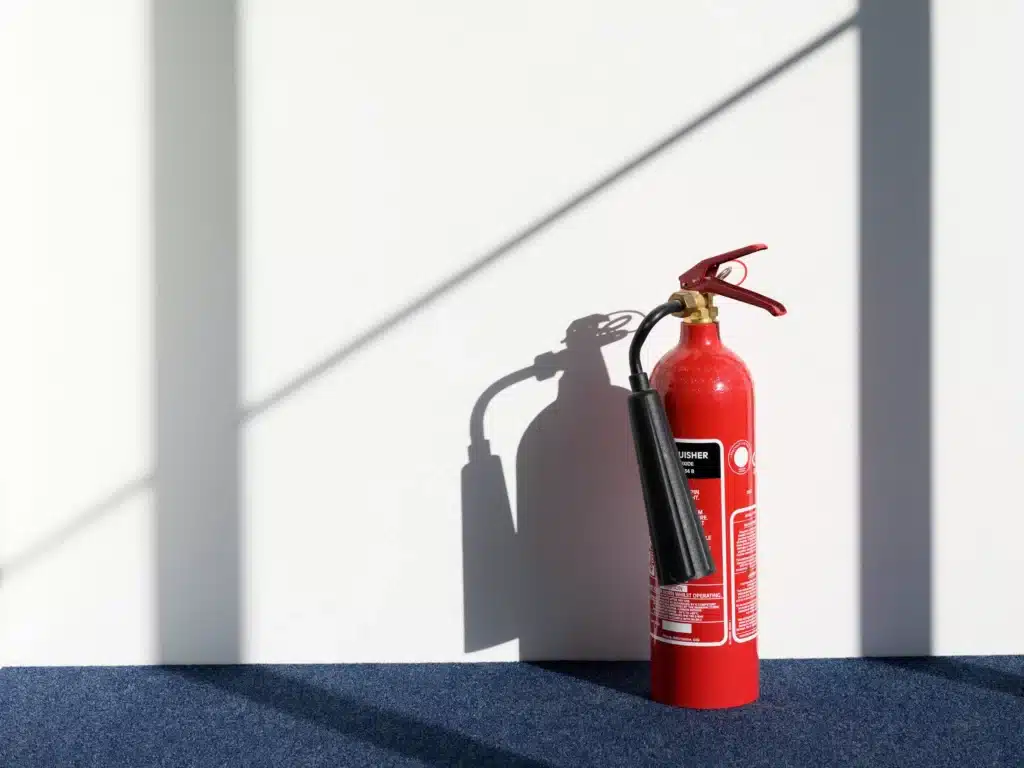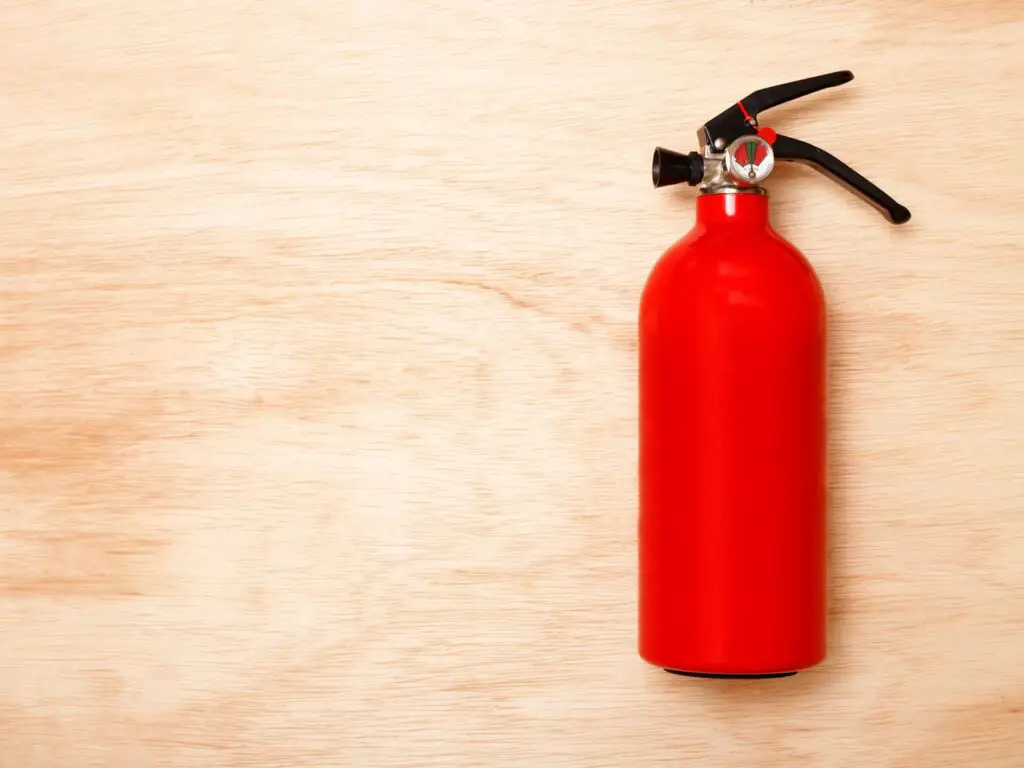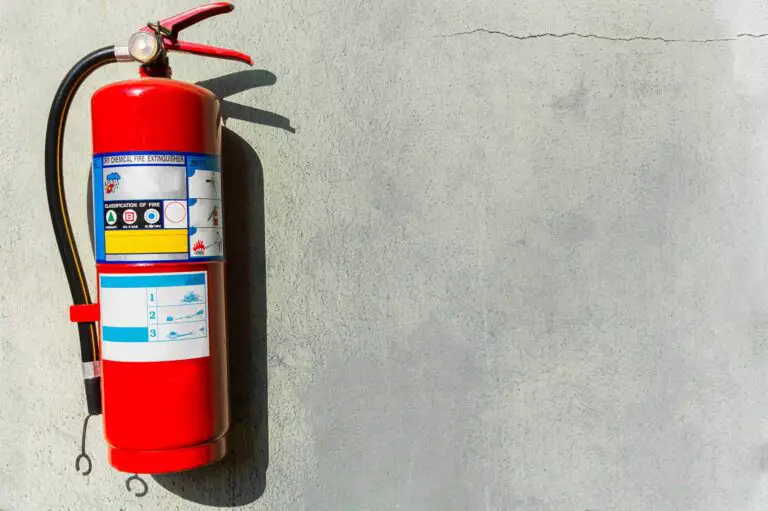Introduction
What Is A Class C Fire Extinguisher: Fire emergencies can pose significant risks to life and property, and the ability to effectively combat different types of fires is crucial. Among the various classes of fires, Class C fires involve energized electrical equipment and require specialized extinguishing agents and techniques.
Class C extinguishers are meant for electrical fires. These fires involve live electrical currents from appliances, machinery, or wiring. Water and foam cannot extinguish Class C fires, which conduct electricity and can shock.
Class C fire extinguishers mount are typically filled with non-conductive extinguishing agents, such as carbon dioxide (CO2) or dry chemical powders. Carbon dioxide displaces oxygen, suffocating the fire, while dry chemical powders interrupt the chemical reactions that sustain the fire. These extinguishing agents do not conduct electricity, allowing for safe extinguishment of electrical fires. Understanding the distinctions between different classes of fires and their corresponding extinguishers is crucial for effective fire safety.

What’s in a Class C extinguisher?
Class C fire extinguishers are required for powered electrical fires. This type of fire extinguisher may contain mono ammonium phosphate, potassium bicarbonate, or potassium chloride, which are all suitable for putting out this type of fire.
A Class C fire extinguisher contains specific elements designed to effectively combat fires involving energized electrical equipment. A Class C extinguisher’s ingredients are carefully chosen to not conduct electricity and extinguish electrical fires.
One common extinguishing agent found in Class C fire extinguishers is carbon dioxide (CO2). Carbon dioxide works by displacing oxygen, which is essential for combustion, thereby suffocating the fire. CO2 is non-conductive, making it safe to use on electrical fires without the risk of electrical shock.
Another extinguishing agent used in Class C fire extinguishers is dry chemical powder. These powders, such as monoammonium phosphate or sodium bicarbonate, interrupt the chemical reactions that sustain the fire. They create a barrier between the fuel source and the oxygen, effectively suppressing the flames. Dry chemical powders are also non-conductive, ensuring the safety of the user when dealing with electrical fires.
Class C fire extinguishers often feature a discharge horn or nozzle to direct the extinguishing agent accurately. The horn or nozzle helps deliver the CO2 or dry chemical powder directly to the base of the fire, increasing the extinguishing efficiency.
Is Class C fire extinguisher dry powder?
Dry chemical extinguishers. “BC” means they extinguish class B and C fires. USC “ABC” fire extinguishers have fine yellow powder. The majority of this powder is monoammonium phosphate.
Class C fire extinguishers can use dry powder. Dry powder is utilized in Class C fire extinguishers because it suppresses electrical fires.
Monoammonium phosphate, sodium bicarbonate, and potassium bicarbonate are common dry powder extinguishers in Class C fire extinguishers. These particles block oxygen from reaching the fuel source by stopping the chemical reaction that feeds the fire.
Dry powder extinguishers can also fight Class A and Class B flames. This makes them popular multi-purpose fire extinguishers.
When a Class C fire involves electrical equipment, avoid using water-based extinguishers. Water conducts electricity and can cause shock or spread fires.
Class C fire extinguishers are safe for electrical fires since their dry powder is non-conductive. A thin powder cloud separates fuel and oxygen, smothering the fire. This puts out the fire.
What is the Colour of Class C fire extinguisher?
Blue
Some call blue-labeled dry powder extinguishers ‘ABC’ since they fight class A, B, and C fires.
A color code or label indicates the color of a Class C fire extinguisher, which varies by manufacturer and area. Class C fire extinguishers are often blue.
Color-coding fire extinguishers makes it easy to recognize their type and use. Blue is related with Class C fires and electrical equipment. The blue hue helps people recognize the right extinguisher for powered electrical fires.
However, countries and organizations may have different color coding standards. Some regions label Class C fire extinguishers yellow. To establish the Class C fire extinguisher color code in a specific place, consult local laws, standards, or labels.
What is Class A vs C fire extinguisher?
Fire Extinguisher Classes
Class A extinguishes wood, paper, and plastic fires. It Class B fights oil, gas, petroleum, etc. fires. Class C fights electrical fires.
It A and C fire extinguishers fight fires with distinct chemicals and procedures.it Class A fire extinguishers work on wood, paper, cloth, polymers, and other solids. These flames produce ash and embers. Class A fire extinguishers employ water, foam, or dry chemical powder. Water or foam extinguishers cool fires, while dry chemical powder inhibits combustion.
Class C fire extinguishers are for electrified electrical equipment fires. These fires have active electrical currents. Class C fire extinguishers use non-conductive ingredients like CO2 or dry chemical powders. Non-conductive substances extinguish fires without electrical shock.
Remember that Class C fire extinguishers may also fight Class A and Class B fires. Water and foam conduct electricity, therefore Class A fire extinguishers are not ideal for electrical fires.

What is the best Class C fire extinguisher?
CO2 extinguishers are best for Class B and Class C fires (flammable liquid and electrical equipment) because they employ a cold discharge to smother and cool the flames quickly.
The finest Class C fire extinguisher depends on many criteria, including the environment’s needs. However, several extinguishers are useful against Class C fires.
Highly suggested is a CO2 fire extinguisher. CO2 extinguishers are non-conductive and residue-free, making them ideal for electrical equipment. They suffocate fires by displacing oxygen. CO2 extinguishers are effective in sensitive electrical equipment or situations where other extinguishing chemicals may damage equipment.
Dry chemical powder extinguishers are also utilized for Class C fires. Monoammonium phosphate or sodium bicarbonate extinguishers stop fire chemical reactions. They work well for electrical fires and other flames. Consider the size and weight for ease of handling, discharge range and duration, and local restrictions when choosing the finest Class C fire extinguisher.
When should I use a Class C fire extinguisher?
Use a Class C fire extinguisher for electrified electrical equipment fires. Understanding when to use a Class C fire extinguisher and how to stay safe is vital.
Here are some situations in which a Class C fire extinguisher should be used:
Electrical equipment fires: If an electrical device, machinery, or wiring catches fire, use a Class C extinguisher. To avoid electric shock, turn off the power before extinguishing the fire.
Electrical panel fires: Class C fire extinguishers may put out electrical panel or breaker box fires. To assure a competent firefight, notify emergency services and prioritize personal protection.
Mixed fires involving electrical equipment: In situations where a fire involves both electrical equipment and other combustible materials, such as paper or fabrics, a Class C fire extinguisher may be appropriate. However, it is important to assess the situation and consider other fire classes involved.
Class B, D, and K flames should not be extinguished by Class C extinguishers .Use the right fire extinguisher for the fire class. Any fire extinguisher, including a Class C, requires proper training, knowledge of fire classifications, and safety standards. Evacuate and call 911 if the fire is out of control or unknown.
How can I identify a Class C fire extinguisher?
Labels, color coding, and markings identify Class C fire extinguishers. Identifying Class C fire extinguishers:
Labeling and markings
Class C fire extinguishers are usually branded for electrical fires. Look for obvious Class C fire extinguisher labels or markings. These labels may indicate electrical device compatibility with symbols or text.
Color coding
Color coding standards vary by location and organization, but Class C fire extinguishers are usually blue. Look for a blue-colored extinguisher body or band on the extinguisher to help identify its suitability for electrical fires. However, it’s important to note that color coding can differ, so it is crucial to refer to local regulations or specific labeling.
Class C symbol
Some fire extinguishers may have a specific symbol or pictogram displayed on them to indicate their suitability for Class C fires. This symbol usually features an electrical plug or a combination of electrical and fire-related symbols.
Instructions and operating manual
The operating instructions or user manual that accompanies the fire extinguisher may explicitly mention its compatibility with Class C fires. It is advisable to familiarize yourself with the instructions provided to ensure proper usage.
How often should a Class C fire extinguisher be inspected?
Regular inspections of Class C fire extinguishers are essential to ensure their proper functioning and readiness for use during emergencies. The frequency of inspections depends on various factors, including local regulations, industry standards, and the recommendations of fire safety experts. However, here are some general guidelines regarding the inspection frequency:
Monthly visual inspections
Labels, color coding, and markings identify Class C fire extinguishers. Fire extinguishers in Class C are identified below. This inspection involves checking the extinguisher for any signs of damage, corrosion, or tampering. Verify that the pressure gauge indicates the extinguisher is still in the operable range. Ensure that the extinguisher is in its designated location and accessible.
Annual maintenance inspections
An annual maintenance inspection should be performed by a qualified fire safety professional. This inspection involves a more thorough examination of the extinguisher, including weighing the extinguishing agent to ensure it is within the proper range, checking the condition of the internal components, and testing the functionality of the extinguisher.
Hydrostatic testing
Class C fire extinguishers typically require hydrostatic testing every few years, depending on the type and manufacturer. Hydrostatic testing involves subjecting the extinguisher to high-pressure water or air to verify its structural integrity.

Conclusion
A Class C fire extinguisher plays a vital role in combating fires involving energized electrical equipment. Its non-conductive extinguishing agents, such as carbon dioxide or dry chemical powders, make it safe and effective for extinguishing electrical fires without the risk of electric shock. Understanding the purpose and proper use of Class C fire extinguishers is crucial for ensuring fire safety in fire extinguishers environments where electrical equipment is present.
By using a Class C fire extinguisher correctly, individuals can protect themselves and others from the dangers associated with electrical fires .Before extinguishing a Class C fire, turn off the power. This precaution helps eliminate the ignition source and minimizes the risk of re-ignition.
Additionally, it is essential to recognize that Class C fires can involve other combustible materials alongside electrical equipment. Such situations necessitate assessing and determining if more fire extinguishers for various fire classes are needed. Overall, education and awareness about different classes of fires and their corresponding extinguishers are key components of fire safety. Regular training on fire prevention, identification, and proper extinguisher use can empower individuals to respond effectively during emergencies and reduce the potential damage caused by fires.

